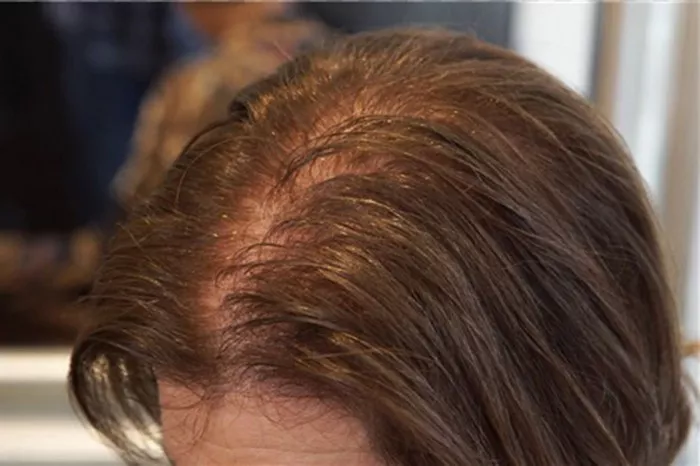Long, luscious locks have always been a symbol of beauty and vitality. Whether it’s for vanity or to overcome the aftermath of a bad haircut, many people seek ways to accelerate hair growth. While genetics play a significant role, there are various methods and products purported to promote hair growth. In this comprehensive guide, we delve into the science behind hair growth and explore the most effective strategies and products to help you achieve the mane of your dreams.
Understanding the Hair Growth Cycle:
Before diving into the plethora of products promising rapid hair growth, it’s crucial to understand the fundamentals of the hair growth cycle. Hair growth occurs in three phases:
1. Anagen Phase: This is the active growth phase where hair follicles are continually dividing, and hair grows approximately 1 centimeter every month. The duration of the anagen phase varies depending on genetics, typically lasting anywhere from two to six years.
2. Catagen Phase: Following the anagen phase, hair enters a transitional phase known as catagen. During this brief period lasting around two weeks, hair follicles shrink and detach from the blood supply, halting hair growth.
3. Telogen Phase: Also referred to as the resting phase, telogen is when old hairs are shed to make way for new ones. Approximately 10-15% of hairs are in this phase at any given time, with a duration of about three months.
Understanding this cycle is essential because various factors can influence its duration and efficiency. Genetics, age, hormonal imbalances, diet, and lifestyle all play crucial roles in determining the rate at which hair grows and sheds.
Effective Strategies for Promoting Hair Growth:
1. Nutrition: The saying “you are what you eat” holds true for your hair as well. A well-balanced diet rich in vitamins, minerals, and protein is essential for healthy hair growth. Focus on incorporating foods high in biotin (such as eggs, nuts, and avocados), vitamin C (found in citrus fruits and leafy greens), and omega-3 fatty acids (abundant in fish and flaxseeds) into your diet. These nutrients support the production of keratin, the protein that makes up hair strands, and provide the building blocks for strong, healthy hair.
2. Scalp Care: A healthy scalp is the foundation for healthy hair growth. Regularly cleansing your scalp to remove buildup of oils, dirt, and product residue is crucial. Opt for gentle shampoos and conditioners formulated to promote scalp health and stimulate circulation. Additionally, incorporating scalp massages into your routine can help improve blood flow to the hair follicles, promoting faster hair growth.
3. Avoid Overstyling: Excessive heat styling, chemical treatments, and tight hairstyles can damage the hair shaft and inhibit growth. Limit the use of heated styling tools such as flat irons and curling wands, and opt for heat protectant products when styling. Avoid tight hairstyles that pull on the hair follicles, such as tight ponytails or braids, as they can cause traction alopecia, a condition characterized by hair loss due to prolonged tension on the hair follicles.
4. Supplements: In addition to obtaining nutrients from your diet, supplements can provide an extra boost to support hair growth. Biotin supplements are widely touted for their ability to promote hair and nail health, although scientific evidence supporting their efficacy is limited. Other supplements such as marine collagen, silica, and saw palmetto have also been studied for their potential to support hair growth, though more research is needed to confirm their effectiveness.
5. Topical Treatments: A variety of topical treatments are available claiming to stimulate hair growth. One of the most widely studied ingredients is minoxidil, a vasodilator that increases blood flow to the scalp and prolongs the anagen phase of the hair growth cycle. Minoxidil is available over-the-counter in various formulations, including foam and solution, and has been shown to be effective in promoting hair growth in both men and women. Another promising ingredient is finasteride, a prescription medication that inhibits the conversion of testosterone to dihydrotestosterone (DHT), a hormone implicated in hair loss. Finasteride is primarily used to treat male pattern baldness and has been shown to slow hair loss and promote regrowth in clinical studies.
6. Laser Therapy: Low-level laser therapy (LLLT) has emerged as a non-invasive treatment for hair loss and is believed to work by stimulating hair follicles and increasing blood flow to the scalp. LLLT devices, such as laser caps and combs, emit red or near-infrared light and are typically used for several minutes a day. While research on the efficacy of LLLT for hair growth is still ongoing, some studies have shown promising results, particularly when used in conjunction with other treatments like minoxidil.
Conclusion:
Achieving long, healthy hair requires a combination of patience, diligence, and a comprehensive approach to hair care. While there is no miracle solution for instant hair growth, adopting a healthy lifestyle, nourishing your body with the right nutrients, and using evidence-based treatments can help maximize your hair’s growth potential. Remember, consistency is key, and results may vary from person to person. By incorporating these strategies into your hair care routine, you can nourish your locks from the inside out and unlock the secrets to beautiful, vibrant hair.


